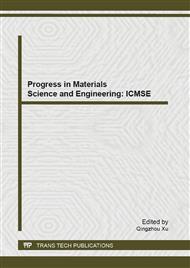p.765
p.773
p.778
p.782
p.786
p.790
p.796
p.803
p.807
Defect Depth of Thermal Non-Destructive Testing for the Titanium Implants
Abstract:
In this paper, the results of the first-stage research devoted to infrared thermographic detection of cracks in titanium alloys are presented. In application to the inspection of bottom-hole defects in 9.6 mm-thick Ti6Al4V titanium alloy samples, it has been found that a minimum detected defect should have diameter from one to two times greater than its depth. Images of phase are more noise-resistant and able to reveal deeper defects compared to images of amplitude. The test results obtained show that the Fourier analysis is a convenient data processing technique in active thermal NDT.
Info:
Periodical:
Pages:
786-789
Citation:
Online since:
October 2013
Authors:
Price:
Сopyright:
© 2013 Trans Tech Publications Ltd. All Rights Reserved
Share:
Citation:


